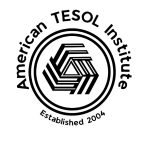Here’s a breakdown of five common ESL teaching methods, with details and examples:
- Grammar-Translation Method:
- Focus: Explicit grammar instruction and translation between the native language (L1) and English (L2).
- Emphasis: Reading complex literary texts and translating them into L1; memorizing grammar rules and vocabulary lists.
- Example: Students translate a passage from a classic English novel into their native language, or complete exercises where they apply specific grammar rules.
- Direct Method:
- Focus: Natural language acquisition through immersion in English; no use of the native language.
- Emphasis: Oral communication, vocabulary development, and pronunciation practice through everyday contexts.
- Example: The teacher introduces vocabulary related to a restaurant, then engages students in a dialogue about ordering food, without translating into L1.
- Audio-Lingual Method:
- Focus: Habit formation through repetitive drills and pattern practice.
- Emphasis: Mimicking correct pronunciation and grammar structures; memorization of dialogues.
- Example: Students participate in chain drills where they substitute words in a sentence pattern (“I like tea.” “I like coffee.” “I like juice.”)
- Communicative Language Teaching (CLT):
- Focus: Developing communicative competence – the ability to use language effectively in real-world situations.
- Emphasis: Authentic language; tasks that involve information exchange, problem-solving, and negotiation of meaning.
- Example: Students role-play a scenario at a hotel reception desk, practicing checking in, asking for information, and resolving a problem.
- Task-Based Learning (TBL):
- Focus: Learning by doing; language acquisition through the completion of meaningful tasks.
- Emphasis: Students solve problems, complete projects, or exchange information to accomplish a specific goal.
- Example: Students collaborate to plan a trip, researching destinations, finding accommodation, and creating a budget, using English throughout the process.
Important Notes:
- Modern classrooms often use a blend of these methods, selecting the best approach based on student needs and the specific learning objectives.
- No single method is superior. Effective teachers consider their students’ backgrounds, learning styles, ages, and goals when choosing their methodology.



